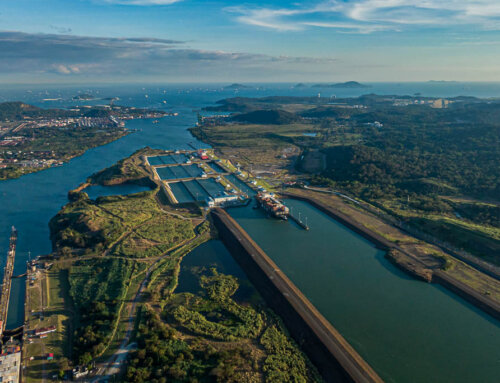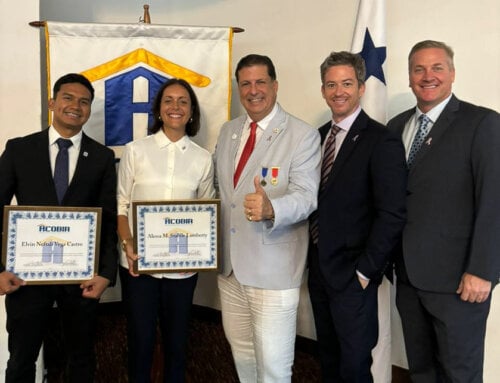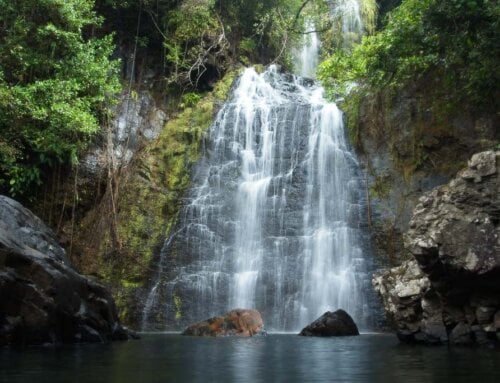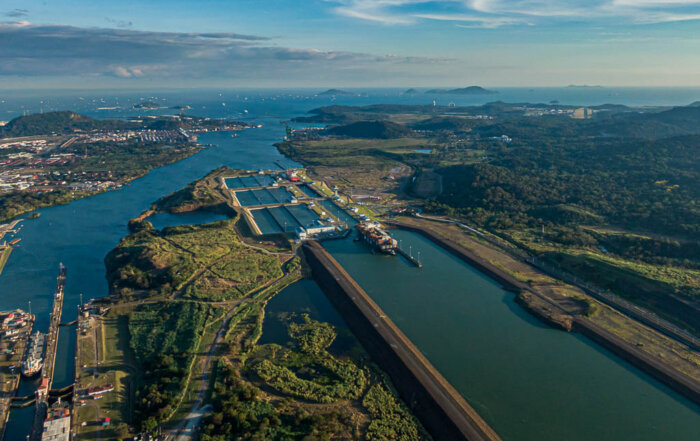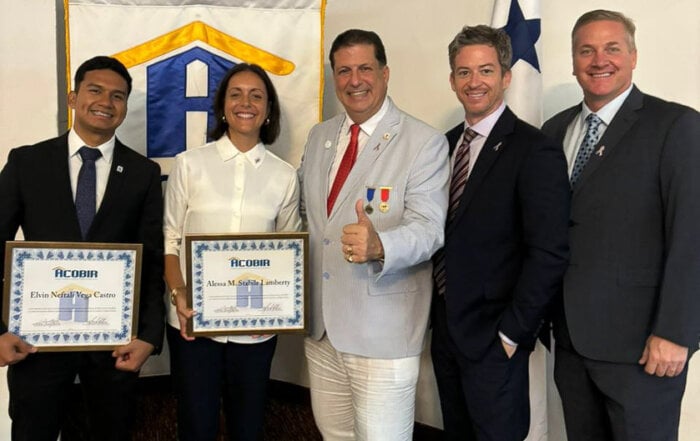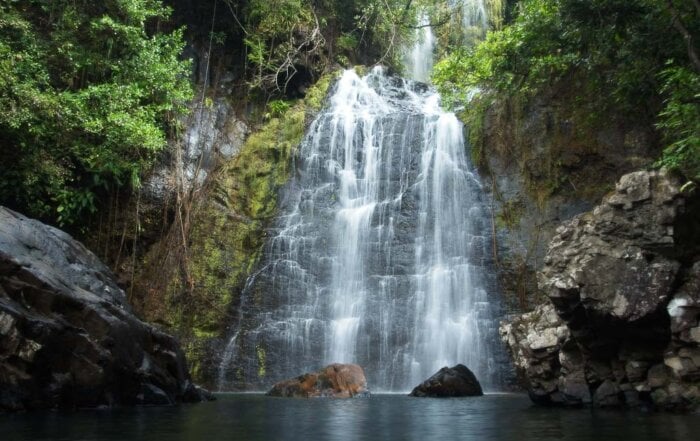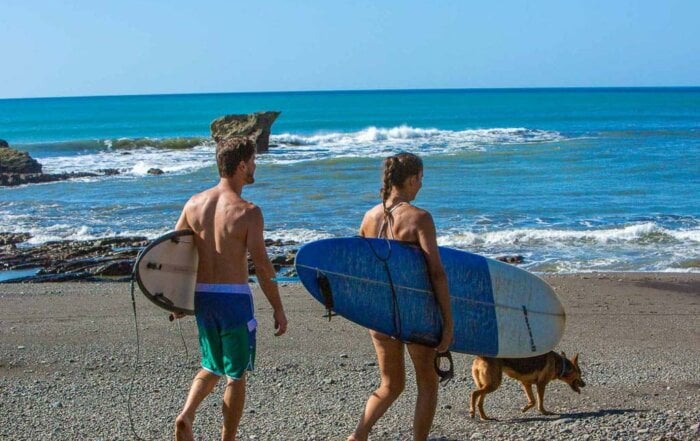
Celebrating Panama’s Independence
Panamanian Independence: El Mes de la Patria
Updated Nov 1, 2024
Panama is preparing to celebrate one of its most anticipated traditions: Fiestas Patrias. Panama celebrates its national holidays with a month-long celebration in November. The festivities include parades, music, dancing, and other events commemorating the country’s history and independence. This year, around 15,000 students and almost 100 delegations are expected to participate in the parades throughout the country, which celebrate the most important dates in Panamanian history. Fiestas Patrias is a time to celebrate Panama’s diverse culture and to show pride in its history, determination, and symbols.
Here are the main holiday dates:
- Sunday, November 3: Separation Day (Día de la Independencia de Colombia)
- Monday, November 4: Flag Day (Día de los Símbolos Patrios)
- Tuesday, November 5: Colon Day (Día de Colón)
- Sunday, November 10: First Call for Independence from the Village of Los Santos (Primer Grito de la Independencia de la Villa de los Santos)
- Thursday, November 28: Independence Day (Día de Independencia de España)
The key things to know about these days:
- If November in Panama really does seem like something you’ll want to do, plan plan plan as much as possible! This cannot be overstated.
- Traffic will be horrendous. A lot of Panamanians will travel out of the city to the beach areas to celebrate the holidays. Roads will be closed for parades. It will take you so much longer to get anywhere so factor that in to your plans.
- Government Holidays Are Banking Holidays! These are all government holidays, so Government offices are closed, schools as well, in addition to limited public services such as buses, and of course, many businesses will shut their doors on each of these holidays too. So, while it is a wonderful time to be in Panama, it has that “holiday feel” for a reason!
- Many people are on holiday, so just be sure to reserve your hotel room, transportation, and tours in advance. And if there are any places you absolutely must get to, be sure to research availability before you leave so you don’t get a last-minute surprise!
- Nov 2nd is a ‘dry day’, meaning you can’t buy alcohol in any stores or restaurants.
Now if you’re someone who wants to know the history of these holidays and what they mean to Panama then keep reading…
November 3rd: Independence from Colombia (1903)
The first holiday of El Mes de la Patria is Panama Independence Day, commemorating Panama’s separation from Colombia in 1903. On this day, people dress in red, white, and blue to celebrate their country’s freedom from colonial rule. Parades assemble throughout the country, proudly displaying a strong patriotic spirit. The largest and most elaborate Independence Day celebrations occur in Panama City, but often the smaller local celebrations throughout the country offer a more up-close and intimate experience.
November 4th: Flag Day
The Flag Day celebration takes place on November 4th, once again commemorating Panamanian independence from Colombia. In 1925, Maria de la Ossa de Amador designed the flag of Panama, and it was officially adopted on March 25th of that year. The Panamanian flag is divided into four even quarters of red, white, and blue with two stars, also red and blue. The red and blue quadrants represent the liberal and conservative parties, respectively, while white represents peace in the nation. The blue star symbolizes purity and honesty in civil society, and the red star represents the rule of law, together standing for the new republic.
November 5th: Colon Day
Colon Day celebrates a strategic win in the fight for independence from Colombia in 1903, whereby residents of Colon City persuaded Colombian forces stationed there not to advance their position into Panama City. Without this persuasive effort in Colón, Colombian forces potentially could have gained a more favorable military position in the fight.
November 10th: El Grito de La Villa de Los Santos
Primer Grito de la Independencia de la Villa de los Santos is not just a really, really long name for a public holiday, it happens to be a very important day as well. Spain ruled Panama through the Viceroyalty of Peru for over 300 years. However, on November 10th, 1821, Rufina Alfaro led a rebellious uprising against Spanish soldiers in the Los Santos province, seizing their barracks without spilling a single drop of blood. This event is now known as El Primero Grito de Independencia de La Villa de Los Santos or the “First Cry of Independence from La Villa de Los Santos”. News of the uprising quickly spread to Panama City and ignited similar “gritos” throughout the country. Expecting a harsh reprisal from the Spanish Crown, the rebels allied with their neighbor, The Republic of Gran Colombia, which at that time encompassed what is modern-day Colombia, Ecuador, Venezuela, and into areas of Peru and Brazil.
If you’re in Los Santos or anywhere on the Azuero Peninsula for this celebration, they really go all out!
November 28th: Independence from Spain (1821)
After only 18 days of bloodless revolt, and through the co-opting of Spanish forces in Panama, José de Fábrega declared Panamanian independence from Spain, though simultaneously joining “The Republic of Gran Colombia” through the Independence Act of Panama. For 82 years Panama would remain part of this regional confederation, until 1903 when the United States, after years of support of separatist movements inside of Panama, assisted the nation in finally declaring its independence from Colombia.
Panamanian Independence Act of 1821

Panamanian Declaration of Independence, 1821
ORIGINAL SPANISH TEXT: Acta de Independencia del Istmo de Panamá de 1821
En Junta General de todas las Corporaciones Civiles, Militares y Eclesiásticas celebrada hoy 28 de Noviembre de 1821 a invitación del Exmo. Ayuntamiento; después de las más detenidas discusiones ante un numeroso pueblo, y bajo el mayor órden y concordia se convinieron y decretaron de común acuerdo los artículos siguientes.
- Panamá espontáneamente y conforme al voto general de los pueblos de su comprehensión, se declara libre e independiente del gobierno español.
- El territorio de las Provincias del Istmo pertenece al Estado Republicano de Colombia, a cuyo congreso irá a representar oportunamente su Diputado.
- Los Individuos de la tropa que guarnece esta plaza, quedan en la absoluta libertad de tomar el partido que les convenga, y en el caso que quieran volver a España, se les prestarán todos los auxilios necesarios para su transporte hasta la Isla de Cuba, a los que guardándoseles los honores de la guerra, seguirán a los Puertos de Chagre o Portobelo, luego que los Castillos estén en poder del Nuevo Gobierno obligándose todos los oficiales, sargentos y soldados bajo el juramento debido, a seguir tranquilos, no hacer estorciones algunas ni tomar las armas contra los Estados independientes de América, durante la presente guerra.
- Los enfermos que se hallan en el Hospital, serán asistidos por el Gobierno, y luego que lleguen a restablecerse se les prestarán los auxilios necesarios conforme el artículo 3.
- El Jefe Superior del Istmo se declara, que lo es el Sr. José de Fábrega, coronel que fué de los Ejércitos Españoles; quedando en el mismo pie en que actualmente se hallan todas las Corporaciones y autoridades así civiles como eclesiásticas.
- El jefe Superior tomará todas las providencias económicas que sean necesarias para la conservación de la tranquilidad pública.
- Las autoridades prestarán en el acto el juramento de la Independencia, señalandose el domingo próximo para hacer su publicación con la solemnidad debida.
- El Jefe Superior en unión de los Comandantes de los cuerpos oficiarán al de la fortaleza de Chagres y destacamento de Portobelo, para que al oficial que presente las órdenes, entreguen estos puntos al estilo militar.
- El Istmo por medio de sus representantes formará los reglamentos económicos convenientes para su gobierno interior, y en interín, gobernarán las leyes en aquella parte que no digan contradicción con su actual estado.
- La deuda pública que reconoce la Tesorería, se pagará bajo los pactos estipulados en su principio.
- Para los gastos indispensables, el Jefe Político abrirá un empréstito que se reconocerá como parte de la deuda pública.
- Los precedentes Capítulos se imprimirán y circularán a todos los Pueblos del Istmo, para que cesen las desavenencias que los agitan, remitiendo los auxilios que necesita esta Capital, para llevar a cabo tan gloriosa empresa, como lo tienen ofrecido.
(Firmado) José de Fábrega. José Iginio, Obispo de Panamá. Juan José Martínez. Dr. Carlos Icaza. Manuel José Calvo. Mariano de Arosemena. Luis Lasso de la Vega. José Antonio Zerda. Juan Herrera y Torres. Juan José Calvo. Narciso de Urriola. Remigio Lasso de la Vega. Manuel de Arce. José de Alba. Gregorio Gómez. Luis Salvador Durán. José María Herrera. Manuel María de Ayala. Víctor de Beltrán. Antonio Bermejo. Antonio Plana. Juan Pío Victoria. Dr. Manuel de Urriola. José Vallarino. Manuel José Hurtado. Manuel García de Paredes. Dr. Manuel José de Arce. José María Calvo. Antonio Escobar. Gaspar Arosemena. José de los Santos Correoso. Escribano Público”.
ENGLISH TRANSLATION: Panamanian Independence Act of 1821
In a general meeting of all civilian, military and ecclesiastical corporations held today 28 November 1821 at the invitation of the City Council, after more arrested discussions before a large village meeting and under the highest order and harmony were agreed and decreed by common agreement the following items:
- Panama, spontaneously and under the general vote of the people of understanding, is declared free and independent of the Spanish government.
- The territory of the provinces of the Isthmus belongs to the Republic of Gran Colombia, to whose Congress our deputy will promptly go to represent us.
- Individuals of the troops garrisoned in this place have the absolute freedom to make the choice that suits them, and if they want to return to Spain, they will be provided all the necessary aid for transport to the island of Cuba; in keeping with the honors of war, those that will remain at the ports of Chagres or Portobelo, then shall make the garrisons the possessions of the new government; putting under obligation all the officers, sergeants and soldiers, under due oath, to remain calm, to not accept any bribes, nor to take up weapons against the independent states of America during the present war.
- Spanish patients who are in hospital will be assisted by the government, and once they return to health will be presented with the necessary assistance in accordance with Article 3.
- The Head of State of the Isthmus is stated to be Don José de Fábrega, who was a colonel with the Spanish armies; all corporations and authorities, civil and ecclesiastical shall be on the same footing that they are currently.
- The Head of State shall take all economic measures that may be necessary for the preservation of the public peace.
- The authorities will give at once the oath of independence, distinguishing next Sunday for its publication with due solemnity.
- The Head of State, together with the commanders of the troops, will notify the fortress of Chagres and detachment of Portobelo so that the official who presents the orders delivers these points in military style.
- The Isthmus, by means of its representatives, will form suitable economic regulations for its internal government; and in the meantime, they will govern according to the current laws in those parts that do not contradict the current state.
- For necessary expenses, the political Head of State will create a loan to be recognized as part of the public debt.
- The public debt is recognized by the Treasury and shall be paid under the covenants set forth in its principle.
- The preceding chapters will be printed and circulated to all the peoples of the Isthmus to cease the disagreements agitating them; sending the help that this capital needs to carry out this glorious undertaking, as they have offered.




















